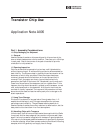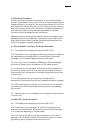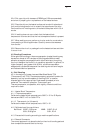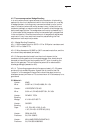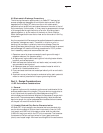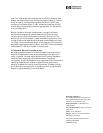
4
4.2 Thermocompression Wedge Bonding
In circuits where there is good access to the transistor chip bonding
pads and to the circuit elements to which the chip bonds run, a variety
of wedge bonders, including many new semi-automatic units, can be
used. In situations where horizontal access is very limited (such as a
transistor package), a manual machine with a small chisel wedge may
be the most appropriate. The wedge does not have to be heated, but if
it is the heater block temperature may be lowered slightly as specified
in the next section. Since the exact amount of temperature adjustment
required will vary from machine to machine, establishing the final
temperature is an empirical process.
4.2.1 Wedge Bonding Procedure
4.2.1.1 Set the heater block to 300°C ±10° for Si Bipolar transistors and
260°C ±10° for GaAs FETs.
4.2.1.2 Wire diameters of 0.0005" to 0.001" are used most often, and the
wire should be prestressed (annealed).
4.2.1.3 Always make the bonds from the circuit element to the
transistor bonding pads to minimize pad damage. Also, bonds should
be made to the source and drain pads of an FET prior to making the
bond to the gate pad. This minimizes the potential for electrostatic
discharge damage (see section 6.0).
4.2.1.4 Tip bonding pressure should be approximately 15 – 20 grams
and should not exceed 20 grams. A good rule of thumb is that the
“footprint” of the wedge on the gold wire should be about two wire
diameters across (minimum of 1.5 and maximum of 2.5 diameters) for a
good bond.
5.0 Material:
Vendor: MWS
Wire: 0.0007 mil, P/N 453-18496, EL 1-3%
Vendor: HYDROSTATICS INC.
Wire: 0.001 mil, P/N 453-010977-001, EL 3-8%
Vendor: DEWEYL TOOL
Bonding
Wedge: K-1/16-L-60-F1507-T1
Vendor: GAISER
Bonding
Caps: 1/8", P/N 1251-15-35, (3-4-3)
1/16", P/N 1551-15-375P-39 (3-5-5)
Vendor: SEMI ALLOYS
Preforms: 0.6, P/N 10902-5
Vendor: WILLIAMS PRECIOUS METALS
Preforms: 0.8, P/N 855-010982-006



